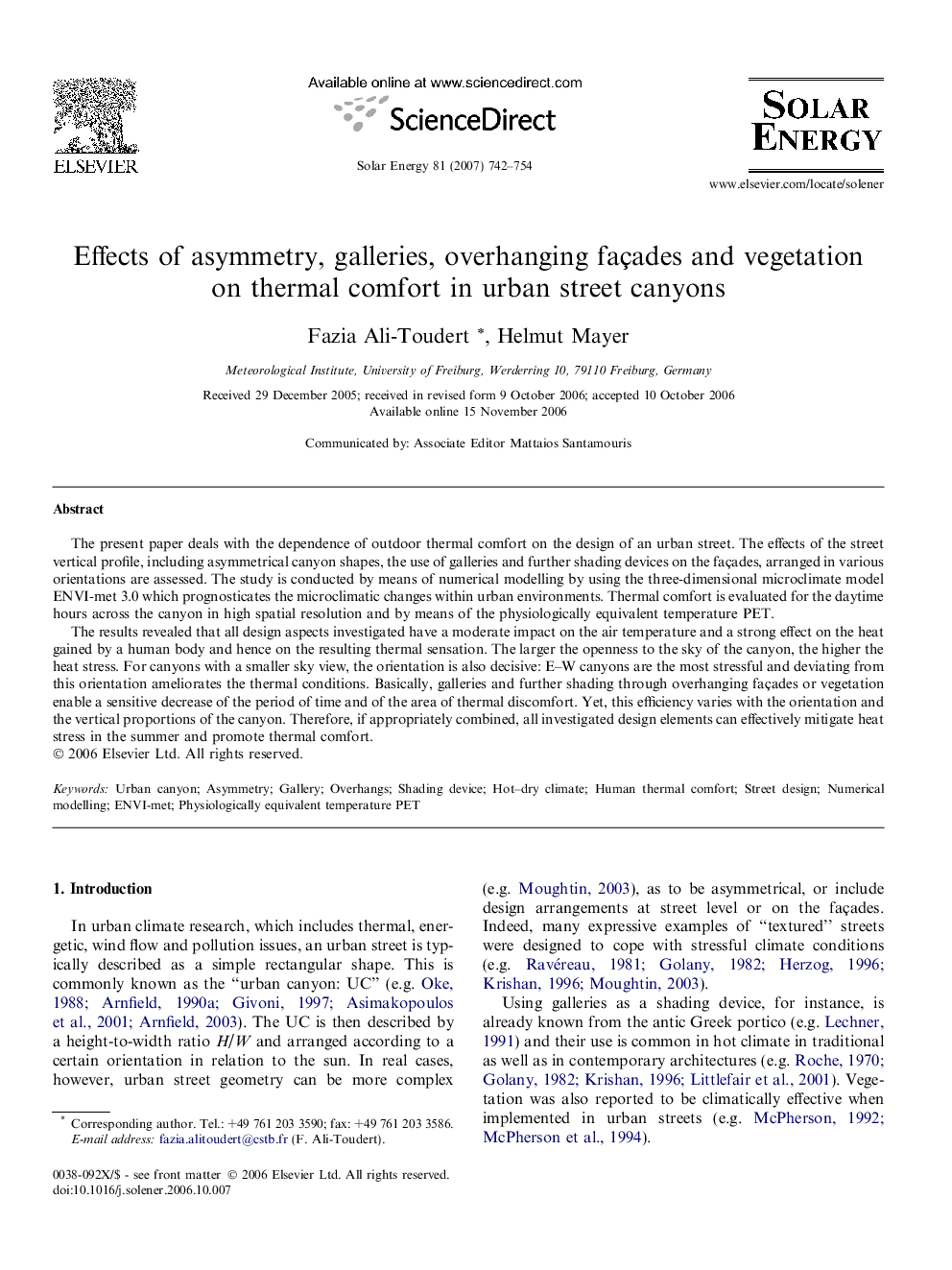| Article ID | Journal | Published Year | Pages | File Type |
|---|---|---|---|---|
| 1551697 | Solar Energy | 2007 | 13 Pages |
The present paper deals with the dependence of outdoor thermal comfort on the design of an urban street. The effects of the street vertical profile, including asymmetrical canyon shapes, the use of galleries and further shading devices on the façades, arranged in various orientations are assessed. The study is conducted by means of numerical modelling by using the three-dimensional microclimate model ENVI-met 3.0 which prognosticates the microclimatic changes within urban environments. Thermal comfort is evaluated for the daytime hours across the canyon in high spatial resolution and by means of the physiologically equivalent temperature PET.The results revealed that all design aspects investigated have a moderate impact on the air temperature and a strong effect on the heat gained by a human body and hence on the resulting thermal sensation. The larger the openness to the sky of the canyon, the higher the heat stress. For canyons with a smaller sky view, the orientation is also decisive: E–W canyons are the most stressful and deviating from this orientation ameliorates the thermal conditions. Basically, galleries and further shading through overhanging façades or vegetation enable a sensitive decrease of the period of time and of the area of thermal discomfort. Yet, this efficiency varies with the orientation and the vertical proportions of the canyon. Therefore, if appropriately combined, all investigated design elements can effectively mitigate heat stress in the summer and promote thermal comfort.
